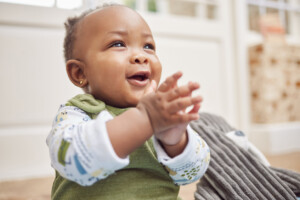What if I told you I had the secret to a cleaner home and a more engaged toddler and that you could have both of these things for FREE? I know what you’re thinking. It also seemed impossible until I read about the benefits of toy rotation.
I used to get so frustrated by a room full of toys that seemed to entertain my tots for mere seconds before they’d dump it on the floor and take out something else. They would get overwhelmed by the sheer mass of it all, and so would I. They would become frustrated and bored, and so would I. Since I’ve begun the toy rotation, those days are gone.
My little ones love and appreciate their toys. They play better with me and each other. They are more imaginative, engaged, and immersed in play. And the benefits extend beyond the playroom! My house is cleaner and more organized. This means we no longer lose track of toys, and toy-related tantrums have almost completely ceased. I will share with you how I’ve implemented this method in my home, so if you’re considering toy rotation for your wee ones, this is a great place to start!
How To Do Toy Rotation
Toy rotation is simply categorizing your child’s existing toys and selecting one of each genre for a container. Your child can fully explore and enjoy this container for one entire week. Then, it is swapped out with a new container filled with new experiences, learning opportunities, and fun!
1. Sort Toys Into Categories
When building your weekly containers, make it a goal to include a toy from each fundamental category — one toy per category, per rotation. If you’re missing one or two categories, don’t fret. The goal is to try and make the most of what you have on hand. The categories include:
- Imaginative play: play cookware, baby dolls, action figures, farm animals, play environments (dollhouse, play kitchen, model fire station), etc.
- Vehicles: planes, trains, and automobiles of all shapes & sizes
- Logic/manipulatives: puzzles, shape sorters, lacing beads, play tool kits, peg and hammer boards, bead mazes, etc. These are usually quiet activities that require focus.
- Music: tambourines, drums, maracas, xylophone, whistles, and keyboards
- Literacy: alphabet sets, word flashcards, and books
- Math/counting: stacking cups, nesting toys, number charts
- Dress-up: costumes, accessories, mommy and daddy’s old clothes, get creative!
- Building: blocks, lego sets, magnet tile blocks
- Art: craft supplies, finger paint, tub crayons, chalk, and Play-Doh

2. Settle On Storage
Once you’ve sorted your toys into categories, the next step is to decide on a vessel for your rotation boxes. I use clear plastic 20-gallon storage bins. I recommend trying to recycle whatever storage you have on hand. Old moving boxes or big diaper boxes are free and would be great for toy rotation. It will work fine if you can number the box or container to keep up with the toy rotation. The number of boxes you choose to build is entirely up to you. I have found that five containers (one a week per month with an “extra” bin) are more than enough to make my kids happy.
3. Build Your Boxes
You’ve numbered your boxes and sorted your toys, so it’s time to make the magic happen. You can be as detailed or carefree about this process as possible. By taking a toy from our established categories and placing one of each into your boxes, you’ve now got a week of educational play, a more organized home, and, likely, a happier child. I like to take my boxes one step further by establishing a weekly theme. For example, I’ve included two “inspiration bins.”
4. A Time to Reflect
Toy rotation called attention to what I brought into my home. Often, when out and about, if my toddler asked for a Hot Wheels car, I would give him one without batting an eye. At a dollar each, they were cheap, made him smile, and allowed me to get through my errands with a contented child.
When setting up our rotation bins, I quickly realized we had nearly 50 Hot Wheels cars. And my son had an emotional attachment and cared to play with precisely two of them. It dawned on me that not only was this wasteful excess, but it was a dent in my wallet I could have used toward a more purposeful toy for him, like a new instrument or building set.
I did a huge disservice to him by indulging in cheap and temporary satisfaction and to myself for accumulated junk that kept my home untidy. It completely transformed my thinking (similar to The Konmari Method) and made me happy to know that less was truly more, even to a fickle 3-year-old.
After setting up my weekly rotation bins, I had to take a long, hard look at the toys that didn’t make the cut. Were they worth keeping? Did they serve a purpose? Were they even age-appropriate? I was able to pack quite a bit away for our next baby as our preschooler outgrew them. Other things were much easier to donate than finding extra space, especially knowing they wouldn’t be missed.

Toy rotation helped to pull my family out from under our massive mountain of toys, and I will forever be grateful! Consider revamping your playroom and overhauling your child’s toy collection to keep everyone — including you — from becoming overwhelmed.



































